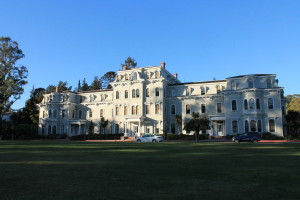
Feeling brave one Tuesday afternoon, I steeled myself for my first encounter with acupuncture, and entered the Oakland Acupuncture Project (OAP) on the corner of MacArthur and Laurel.
According to their website, OAP is aimed at making “Chinese Medicine accessible by providing affordable community-centered health care.” While natural remedies and alternative medicine are often inaccessible, OAP is trying to change that. They charge anywhere between $15 and $35, depending on what is affordable to the client.
Acupuncture is one of the oldest practices of traditional Chinese medicine, and dates back to around 100 BC. It is typically used for physical pains and ailments, but is often used to treat anxiety and depression. As someone with a serious fear of needles, I had never considered giving acupuncture a try. But with finals just around the corner, I was desperate for anything that might relieve some of my stress.
I was taken into the area where clients receive acupuncture. As I saw the three rooms that I could choose to sit in, I averted my eyes from the other clients, unable to look at the needles sticking out of their hands and feet without feeling queasy. At OAP, clients receive acupuncture in a communal setting where the needles are placed on their arms, legs and heads, and they are only asked to remove their shoes and socks.
When my acupuncturist crouched next to my chair, I told her I wanted acupuncture for stress relief and anxiety. She took my pulse and looked at my tongue before asking me to remove my shoes and roll up my sleeves and pant legs. She swiftly stuck hairlike needles into my hands, arms, feet and behind my knees. I began to feel lightheaded as she stuck the needles into my forehead and ear, and I closed my eyes, hoping that if I fainted she would just think that I had fallen asleep, deciding that it was too late to back out now.
My acupuncturist told me she’d be back to check on me in half an hour, and it dawned on me that I now had to sit still for 30 minutes, trying to pretend that my hands, feet and face didn’t resemble porcupines. Although my heart rate didn’t settle back into its normal pace until after I had left the building, the needles weren’t as uncomfortable as I had expected. I didn’t feel them at all while sitting still, and I almost enjoyed the heavy sensation in my arms.
I felt slightly horrified when my acupuncturist proclaimed that I had “leaked” and wiped a trickle of blood from between my eyes, and was relieved when the final needle was plucked from my ear. I was proud of myself for remaining conscious throughout the full half-hour, but made sure to leave cash for my session knowing that I would not be returning.
Acupuncture wasn’t the right way for me to relieve stress due to my fear of needles, but for those that find acupuncture helpful, OAP acts as an affordable resource for a practice that is not always accessible to the general public.


